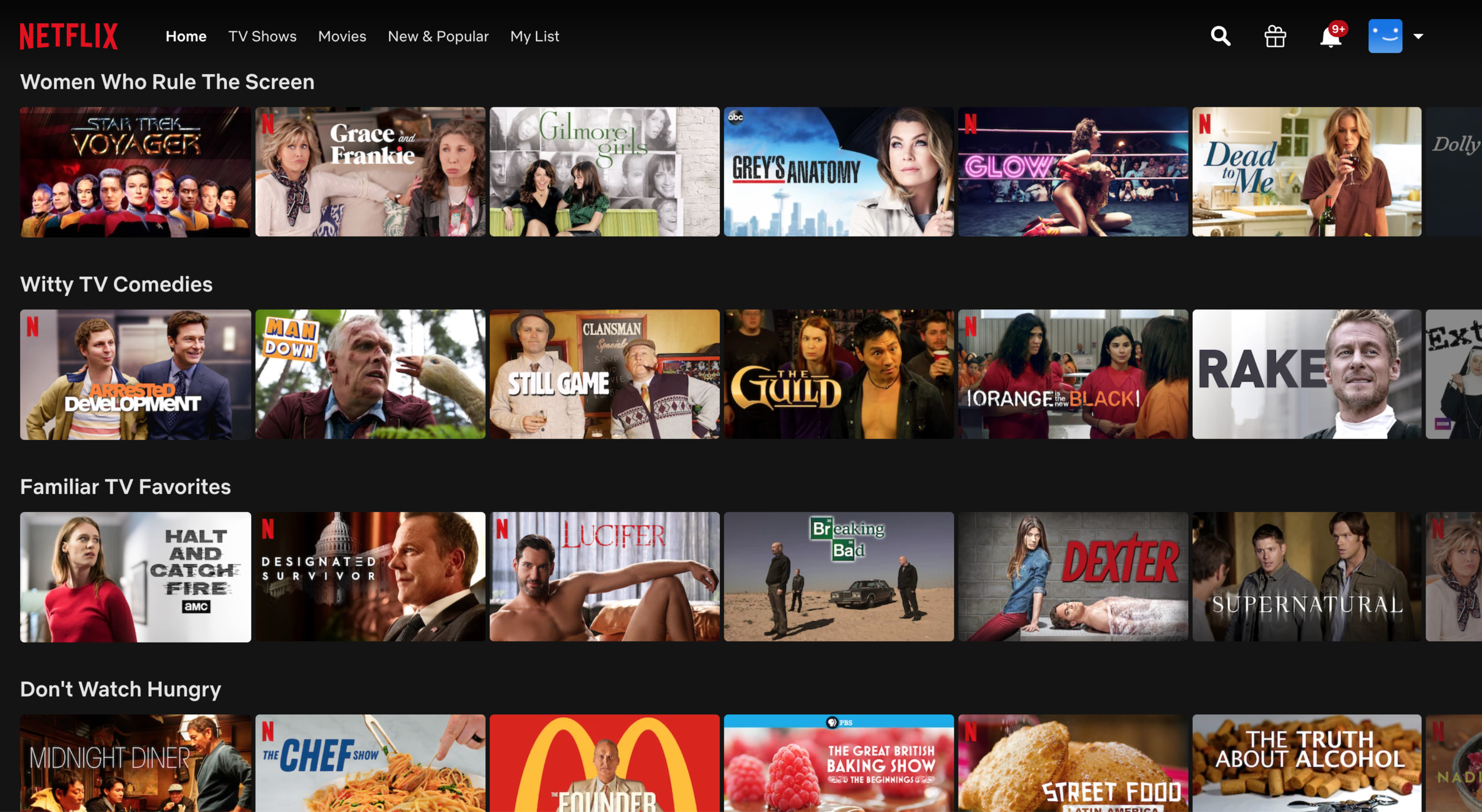Personalization
the action of designing or producing something to meet someone's individual requirements.
Curation
the selection, organization, and presentation of online content, merchandise, information, etc., typically using professional or expert knowledge.
The promise of personalization as it pertains to marketing has been that companies can leverage customer browsing and purchasing data to merchandize other relevant products they may want to buy. But as much as that data tells a company all about a recent purchase, it rarely speaks to the why behind the buy. Which is where curation comes in. Curation expands the possibilities of what can be merchandized, whether that be in an email, on a website, or in an app. But it can do so in ways that will feel serendipitous to the consumer as opposed to just merely trying to sell stuff.
Personalization today
Personalization started out simple enough. Instead of using “Dear customer” as a greeting on an email or direct mail piece, a company would print your first name. And, believe it or not, it moved the needle. As time moved on, more and more customer data became available. Data obtained via CRMs allowed for the construction of customer profiles. The recommendations served up based on these profiles looked for common denominators and overlapping data points.
Unfortunately, the results have been lackluster. Take, for example, Amazon. In this screengrab, which is hardly a rarity, we see the recommendation algorithm suggesting more of a previously searched sugar-free gum - but just in different sizes.
Screengrab courtesy of Jonathan Howard but let’s face it, everyone has had this kind of experience.
Amazon is, of course, not alone. Many companies send emails with shirts or socks similar to ones you’ve previously purchased. Or even try to leverage lookalike data to show you items “people like you” have bought.
Then there are retargeting ads. You know the ones. After you stop at one site and spend a little time looking at a sweater, you see ads featuring that same sweater as you browse other sites. To be sure, repeat exposure of a product can tip “fence-sitters” (the ones who really want to buy but don’t initially) into buyers. But that proves the point that personalization alone can come across a bit ham-fisted.
When personalization is curated
Netflix, in the early 2000s, had a recommendation algorithm that took advantage of what is called “the long tail.” The long tail simply meant content that had seen the peak of its revenue earning days and while available, not widely watched, or whose audience was always going to be small. The Netflix recommendation algorithm would take the titles you rated highly, or wrote positive reviews of, and look for and recommend a movie or TV show in the long tail that you would likely be interested in. The recommendations felt like magic.
But to really improve the algorithm, Netflix created what were called micro-tags. Each movie and TV show was watched and broken down into these micro-tags. The idea was to move beyond top-level tags like “comedy” or “buddy cop movie” and get super detailed tags like “dark tones” or “strong female leads.” Armed with these micro-tags, Netflix could now use its algorithm to create “neighborhoods” of content. These neighborhoods consisted of content that, on the surface wouldn’t appear to have any connection. But below the surface, shared enough of the traits that the member had valued about their previously viewed content. Think of it as a virtual Venn diagram. One couldn’t draw a straight line between source material and the recommendations but somehow they still felt pretty spot-on.
And with the advent of streaming, Netflix has a direct data pipeline into subscribers’ homes. It now accesses data that it couldn’t have before. It learns not only what you watched but how much of it you watched. How often you paused. Did If you completed the whole series. And so on. With that level of detail, the recommendations got even better. Now, every time you log in to Netflix, the entire experience is curated around all the data signals you’ve shared.
Netflix UI showing rows that have been built specifically for the viewer
Personalization + Curation
So, why is it that we still hear that the future of marketing is just “personalization?” In reality, what provides for a richer and ultimately more valuable customer experience is going to be personalization - with curation. Companies that can deliver accurate curation are going to leave customers feeling like the company “gets” them as opposed to having them feel like they are just being sold to.
There are many ways for companies to think about curation.
Curating Community
One area of focus for adding curation is community-building. It is up to each company to discover what and where their community will exist but the important thing to remember is that the community is not about pushing direct-sales, it’s about providing outsized value to customers and non-customers alike. In doing so, a company will raise awareness, raise engagement, raise interest, and yes raise purchases. All while helping to build a brand at the same time.
Now you might be saying, “wait, I thought this was about marketing?” It is. Building community is a great way to spur one of the most valuable channels for any company - word of mouth. Obviously, if a company is going to curate a community, it has to find out what values its customers and potential customers need as it relates to the products or services that are on offer.
Let’s say, for example, you sell kettlebells for CrossFit. Your customers may need to know how to clean them, store them, learn about other uses for them, learn about other exercises that complement those that used kettlebells, dietary help for optimal workouts, etc. The way to learn what will be considered valuable is via consumer research. Not just with your current customers and people who behave like your customers but with people who are your next set of customers. If a company does this so it is building for the future.
Curating Experiences
Likewise, curating experiences will be optimal for marketing in the future. Imagine getting an email with a curated selection of complementary products and information that is so compelling that you click through to the site. Now imagine a company taking all inputs about you available to them, like email clicks, shopping behavior, past purchases, and more, and feeding that into an AI that instantly auto-generates a landing page built just for you. Much more powerful than a generalized pre-built landing page based on a persona.
Curating Products
Lastly, there is the idea of curating products. An early baseline, an example of curation as it exists now, comes from Nordstrom. In the example below, I chose a short-sleeved shirt full of oranges. Most other sites would show me more short-sleeved shirts with similar patterns. Here, Nordstrom has put together a “look” to demonstrate how the shirt might look with other items they sell. You can also click on those items to learn more and add to your cart without even leaving the page.
Current example of Nordstrom’s curation
You may have noticed how I said baseline. That’s because while this is curation, it is curation from the POV of the company. While they are taking cues from browsing behavior like the Amazon example above, they are also using their internal data to construct a curated set of related products that complement the one being browsed.
What next in marketing
Now imagine if a company took an approach like Netflix-- but extended it. They could start with micro-tagging each product they sold, then combine that with CRM data, social data, location, and even contextual data (like weather or news) into an AI trained to surface non-obvious combinations of products or even experiences based on your specific tastes and preferences.
And that’s just the beginning. By combining curation with hyper-personalization, companies will be able to create unparalleled experiences for their customers.
Big ups to my marketing/ strategist friends Adam Leidhecker and Marc Röger and my business partner (and friend) Gary McMath for the editorial help.




